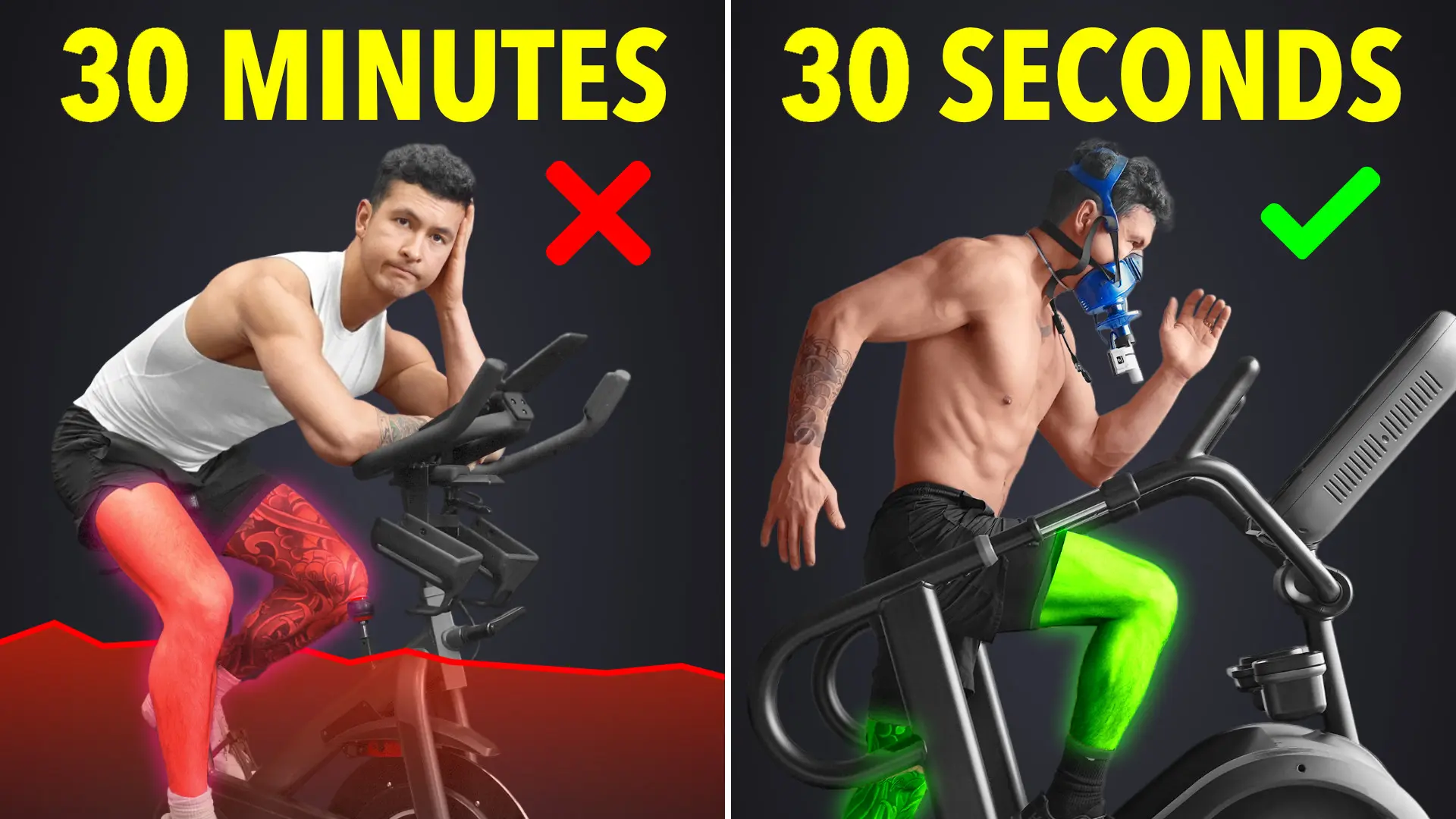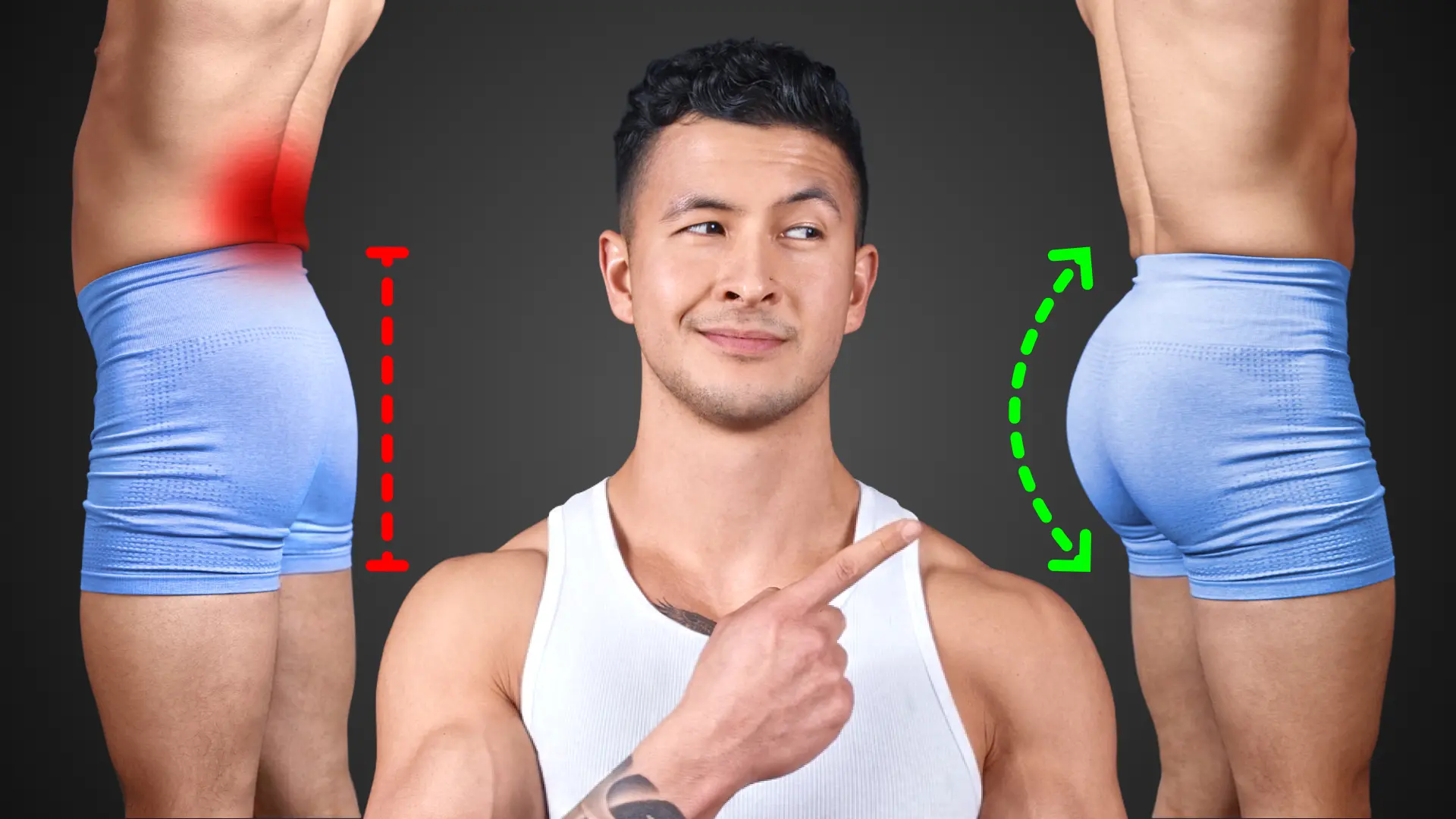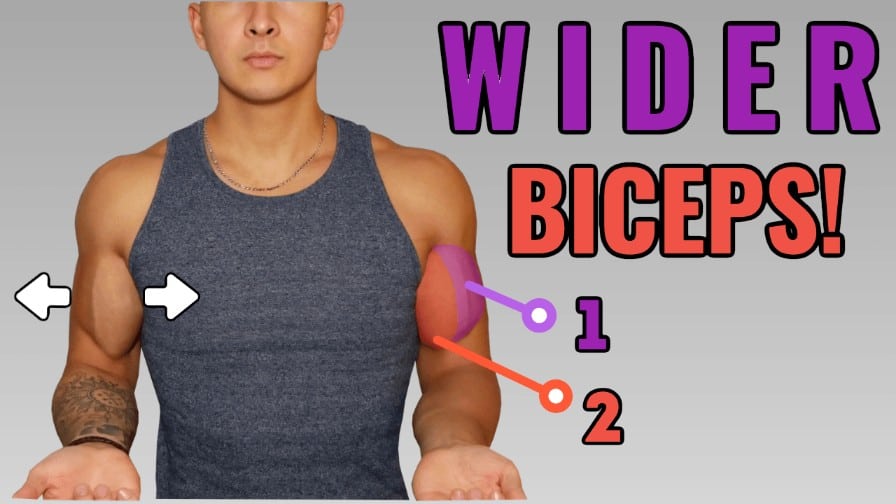
How To Get Wider Biceps (Full Biceps Workout)
If you're seeking to improve the width and thickness of your biceps... Then you need to use this workout.
When it comes to building bigger biceps, I think it’s fair to say that most of us don’t just want a well-developed biceps peak.
More importantly, we want biceps (and arms in general) that are full and thick looking such that they not only look good from the side or when flexed...
...but also look well developed from the front view or in a shirt for example:

And if you’re seeking to improve this, then what you’re aiming to do is actually increase the width of your biceps:
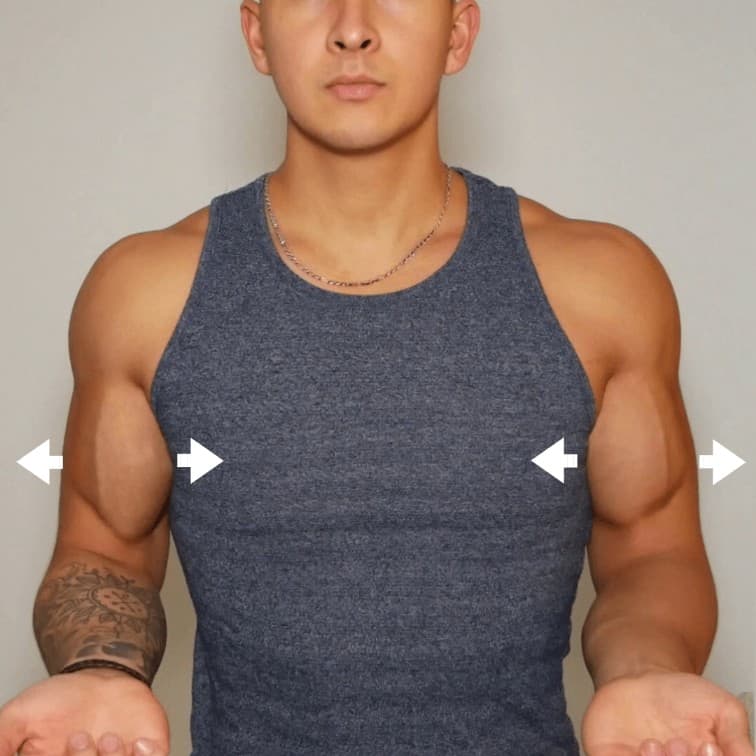
But is this even possible in the first place?
Well, although it’s true that genetics will play some role in this and that bigger biceps in general often results in wider biceps as well, there are a few key things you can do to further improve the width of your biceps.
And to learn what these things are, we need to first take a look at the anatomy of the biceps.
Looking to learn how you can target each of your muscle groups appropriately (and effectively) – in addition to the biceps? No worries. I’ve got you. I’ve designed every program of mine to be an all-in-one, science-based process that’ll get you to your dream physique FAST:
Click the button below to take my analysis quiz to discover the best program for you:
↓
Biceps Anatomy
The biceps, as the name hints, is a two-headed muscle consisting of a short head and a long head. The short head is located on the inside and the long head is located on the outside:
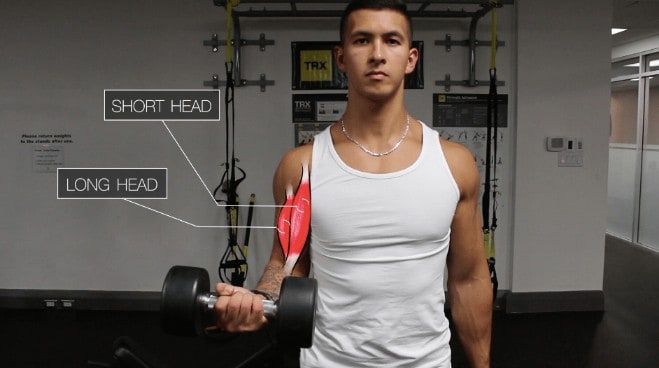
This picture of the biceps anatomy alone should already make you realize that you definitely can improve the width of the biceps...
And you can do so by emphasizing the biceps head that is currently less developed on you!
For example, the short head of my biceps has always been far more developed than my long head.
It wasn’t until I started prioritizing the long head that I started to see a considerable improvement in the overall width of my biceps since the outer head was now larger.
In fact, I recently ran a poll on my Instagram asking which head people thought was less developed on them from the front view:
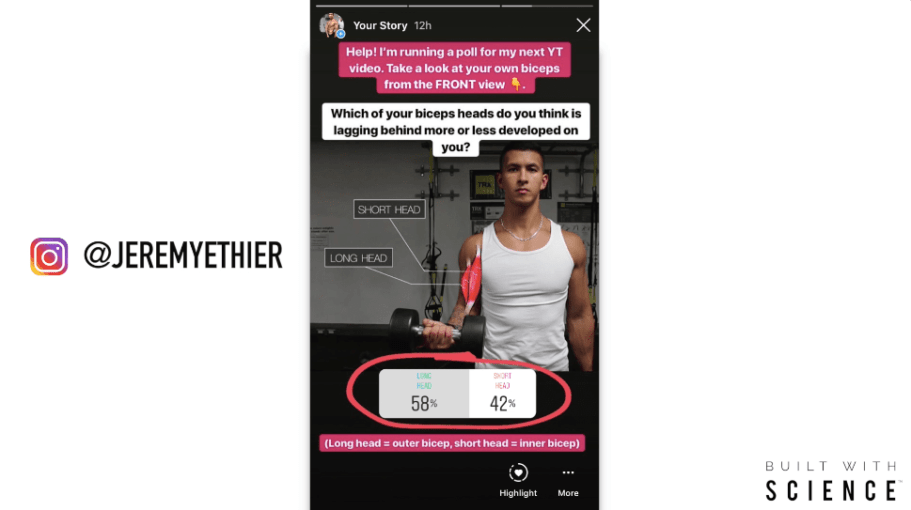
With 58% answering the long head and 42% the short head. So it’s clear that the long head does tend to be less developed with others as well.
But, there is still quite a bit of variation, therefore in this article I’ll show you exactly what to do in either case.
Before we dive into the workout though, there is one even more important muscle you should be prioritizing for width...
The Brachialis!
The brachialis is a lesser known arm muscle that actually lies underneath the long head of the biceps:
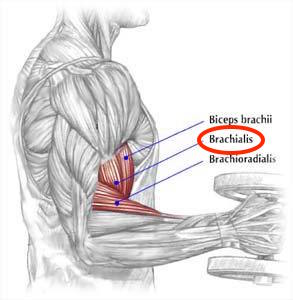
This muscle is not only responsible for some of the mass of the outer arm but it ALSO anatomically pushes up the biceps. This basically creates the illusion of a wider-appearing arm - which is exactly what we're aiming to accomplish.
So with that being said, let’s take a look at a workout you can do to improve your biceps width, by first prioritizing the brachialis and then working on your less developed biceps head.
The Biceps Width Workout
Part 1: Brachialis (DB Hammer Curls with Slow Eccentric)
Unlike the the biceps, the brachialis muscle only has one purpose and that is to flex the arm.
Therefore, in order to target it, and as recommended in this EMG analysis by Naito and colleagues:
You want to flex your arm with a pronated or neutral grip when curling which will shift some of the work away from the biceps and onto the brachialis.
And one great exercise that implements this is dumbbell hammer curls, where you perform a curl with a neutral grip:
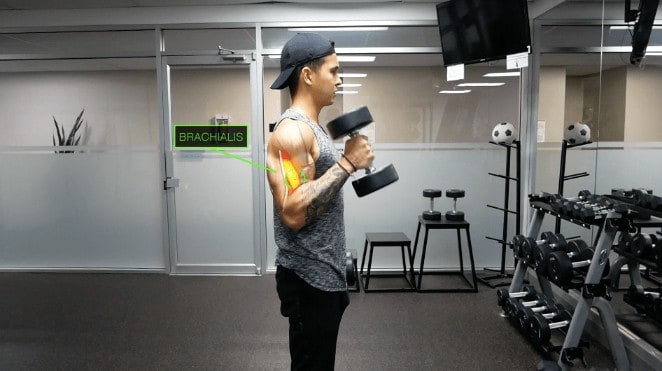
However, taking this even one step further, we can implement the findings of this paper from the American College of Sports Medicine which found that:
By slowing down the eccentric portion of the movement, you’re actually able to further decrease the involvement of the biceps and increase that of the brachialis.
Here's a graph from the paper illustrating the above statement:
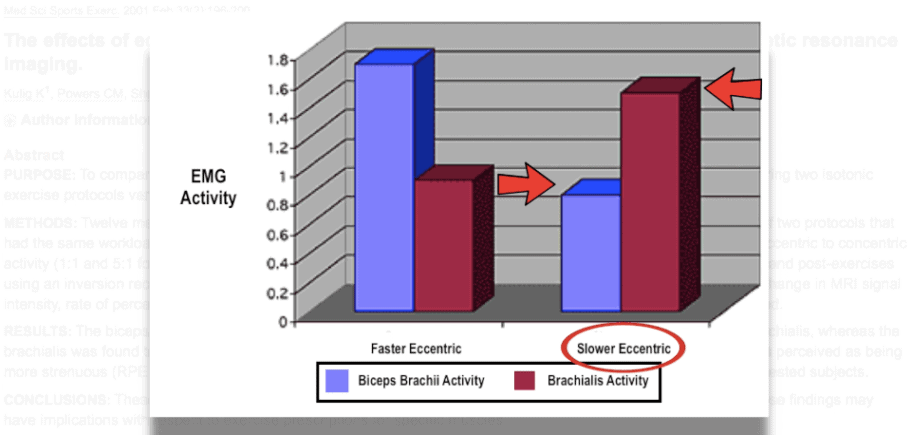
The researchers speculate this phenomenon is due to the structural and fiber type differences between the brachialis and the biceps.
Read More about it in my article on slow reps vs fast reps.
Therefore, when you perform your hammer curls, you can apply the protocol they used by simply implementing a 5 second eccentric during the way down of each rep:
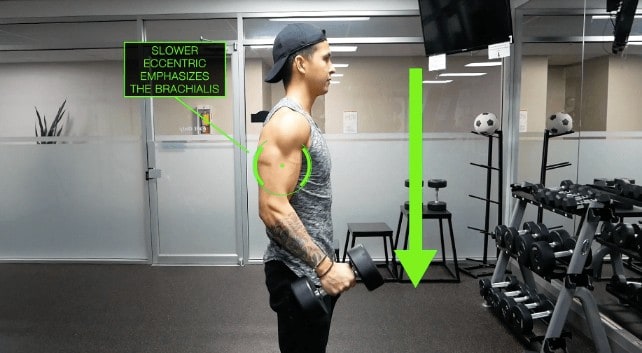
This will just enable you to isolate the brachialis that much more.
Of course, your lifting tempo is going to change based on the exercise you're performing. If you wish to get more guidance on this, don't worry. Our 2-on-1 coaching program can help. I and my team are going to personally determine the lifting tempo most suitable for you and your selection of exercises - helping you achieve your dream physique. Sounds good? Let's get started then:
Click the button below to find out more about the 2-on-1 coaching program:
↓
Part 2a: Long Head Lagging Behind (DB Incline Curls + Behind Body Cable Curls)
Next, if your long head is lagging behind, then what you want to do is start implementing exercises that preferentially target this head.
And as stated in my other biceps articles:
Any biceps exercise where the upper arm is held behind the body will favour the long head since it crosses over the shoulder joint whereas the short head does not.
Thus, the incline dumbbell curl is a great biceps exercise to emphasize the long head:
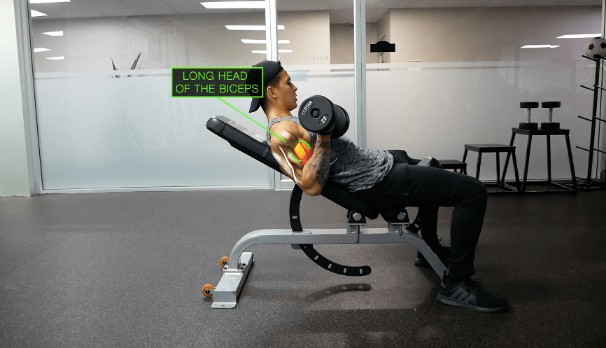
However, as shown in this 2009 paper from the Journal of Sports Science and Medicine:
During the incline dumbbell curl the biceps are most active in the final 1/3 of the movement when the arm is fully flexed, since there is less resistance during the beginning portion of the movement due to the position of the arm relative to gravity.
Therefore, you want to pair this exercise with something like the behind-the-body cable curl.
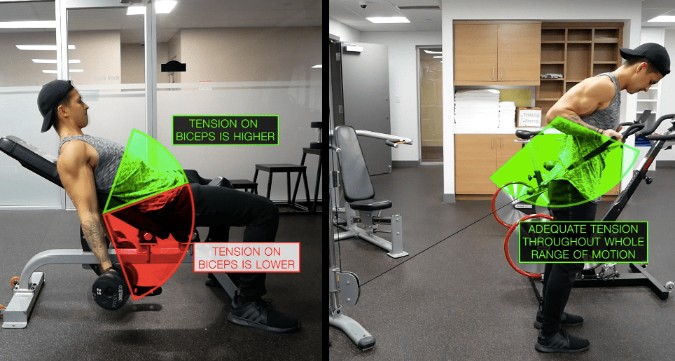
This exercise not only preferentially targets the long head as well given the position of your upper arm, but ALSO has a more complete resistance curve due to the constant tension from the cable.
Part 2b: Short Head Lagging Behind (Concentration Curl + Spider Curl)
Now in terms of emphasizing the short head, we simply reverse what we did for the long head.
Given that the short head does not cross the shoulder joint, this now means that:
Any biceps exercise where the arms are held in front of the body will preferentially target the short head more while lessening that of the long head.
For example, concentration curls, where the arm is placed in front of the body as shown below, is a great exercise that accomplishes this:
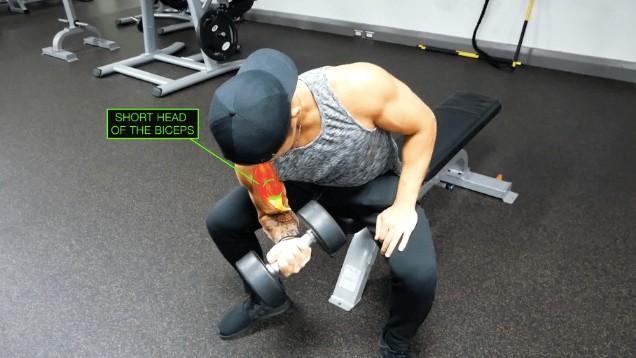
But in addition, of particular importance for the short head, you want to also keep another tip in mind.
We know based on EMG analysis that activation of the short head is maximized with combined flexion and supination:
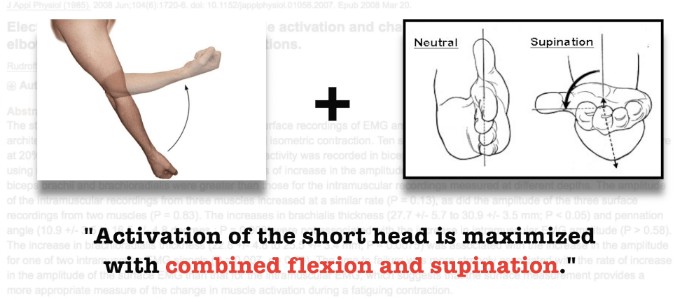
So to further preferentially hit the short head, you want to ensure that you’re supinating your wrists like so during each rep. You can do by simply thinking about twisting your pinkies towards the ceiling as you curl.
Another similar movement you can incorporate is spider curls, where you lay on an inclined bench and let the arms hang infront of your body:
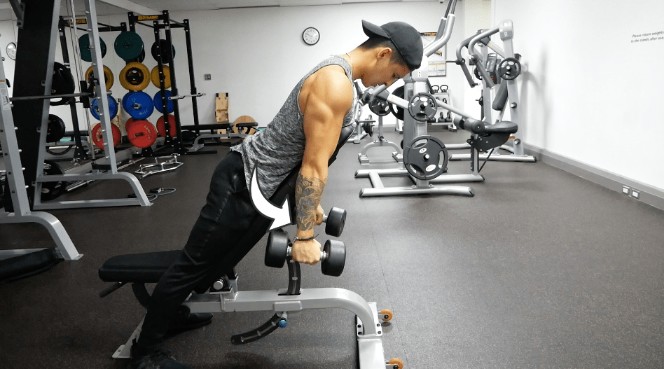
Again, focus on locking the elbows in place and supinating your wrists as you curl in order to best hit the short head.
Your Biceps Width Workout:
Now as for how to combine this all into a biceps width workout that you can get started with right away, I’d suggest the following:
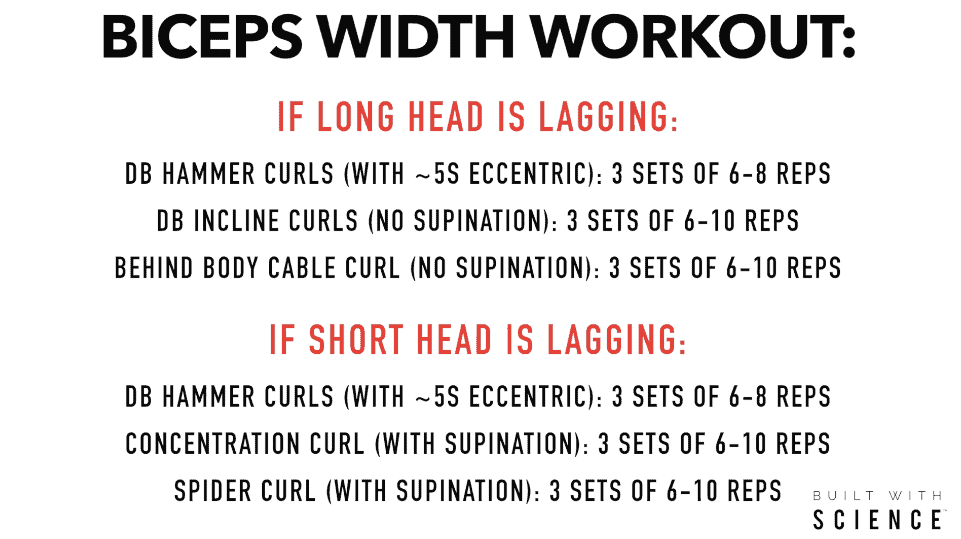
You can either perform this as a workout on its own or simply replace your current biceps isolation exercises with these instead. Either way, by implementing this into your routine you’ll be able to successfully add the much needed width and thickness to your biceps that you’re after.
And for those looking for a step-by-step program that combines both scientific literature and our knowledge of the human anatomy in order to transform your body as efficiently as possible...
Click the button below to take my analysis quiz to discover the best program for you:
↓
Anyways, hope you all enjoyed this article! Feel free to let me know if you have any questions down below. And give me a follow on Instagram , Facebook , and Youtube where I’ll be posting informative content on a more regular basis. Cheers!


